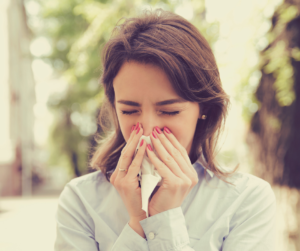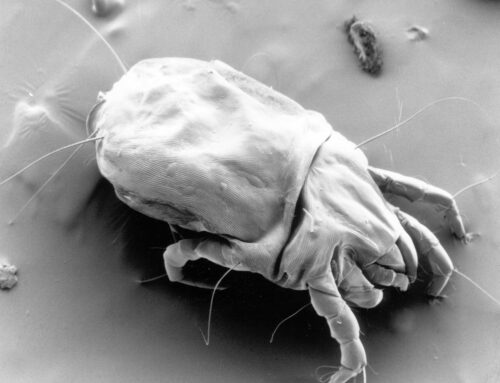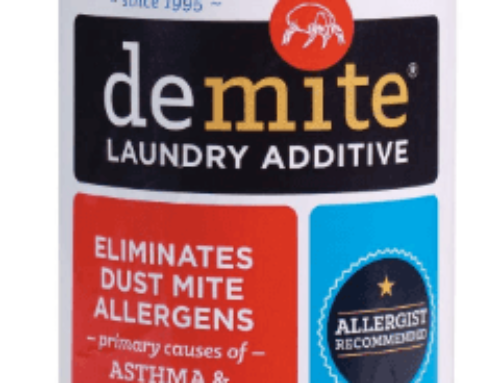Table of Contents
People living in the most household are having dust mites as their companion. The problem is most are oblivious to the fact as dust mites are quite invisible to the naked eyes. And co-habiting with dust mites seems like a harmless affair until someone in the family starts complaining of discomfort.
How Dangerous Can Dust Mites Be?

It depends on how one interprets the definition of ‘dangerous’. Dust mites do not feast on human blood. As such, they do not bite on you when you’re asleep. There is a common myth that claims they do when in fact those bites are caused by bed bugs.
If dust mites don’t bite, are they harmless?
The brutal answer is no. Dust mites can be more dangerous than bed bugs that bites and feast on blood in the dark. The damage caused by dust mites are devastating for some people and there is no quick solution to mitigate such impact.
Some people suffer from dust mites allergy and have found their life being reduced to a constant battle with the accompanying symptoms. People with dust mites allergy often complains of teary eyes, itchy throat and nasal inflammation.
Initial tell-tale signs of dust mites allergy are coughing, sneezing and for some individuals, developing itchy rashes on their skin. The allergy symptoms may lead to serious nasal inflammation and when left untreated, increased the chances of developing asthma amongst children.
What Causes Dust Mites Allergy?
Dust mites chew on dead skin cells that you shed daily for food. In a heavily infested home, it isn’t unusual for dust mites to grow in the range of millions, especially in the mattress. As you make your bed, thousands of dust mites are sent into the air.
But it isn’t these tiny critters that trigger your allergy.
Dust mites produce fecal pellets or excretion that are a fraction of their size. An average dust mite measures around 0.3 millimeters and its fecal pellet are as small as 20 micrometers. An average of 20 pellets is produced daily by a single dust mite.
The fecal pellet contains a form of protein is the main culprit that triggered allergy response in humans. As you inhale the pellet particles in the air, your immune system starts reacting to these foreign elements that are present in the body.
Not all individuals may show a sign of allergies to dust mites. Dust mites allergy can be influenced by genetic and children are more prone to develop symptoms compared to adults. However, having a large presence of dust mites in your home may increase the chances of allergies.
How Is Dust Mites Allergy Treated?
If you suspect that you or your family is experiencing dust mites allergy, and the symptoms show no sign of improvement, you ought to consult a doctor. A doctor will diagnose based on the observed symptoms and in some cases, an allergic skin test is done.
You’ll usually be prescribed with antihistamine, which helps to stop allergic responses such as the runny nose, sneezing, and itchiness. Antihistamines are often prescribed as an oral solution or in some cases, nasal spray.
If you’re suffering from nasal inflammation, the doctor will usually prescribe decongestants and corticosteroid. These help to reduce inflammation in the tissue. Ensure that you’re using the decongestant according to the instruction of your doctor. Some decongestants may worsen nasal congestion if used for more than 3 days. (Source)
Keeping Dust Mites Under Control
Depending on how sensitive you are to dust mites, they can be dangerous or completely harmless. But it’s never a good idea to allow dust mites to grow uncontrolled in your home. You’ll never know when you have a new addition to the family who can be extremely sensitive to dust mites.
My ignorance on dust mites cost me dearly as my son struggled for more than 12 months with dust mites allergy as I tried to keep the pests under control. Hundreds of dollars are spent on consultation, treatment, and medicines as the symptoms keep resurfacing due to the environment.
To reduce dust mites in your home, you’ll need to understand the habitat that dust mites thrive in. Dust mites live in a moderately warm environment (20 – 25 Degrees Celcius) and are comfortable in humid air (70%-80%). Their source of food is the millions of dead skin cells that you shed off each day.
The key to keeping dust mites under control is to disrupt its growth environment or to actively destroy them. You can start by lowering the humidity of your home if you find it stuffy and molds are growing in various places.
You’ll need to wash your beddings regularly as the bed is where you spent most of your time in and has the highest concentration of dust mites. Alternatively, you can consider getting anti-dust mites beddings or use a hypoallergenic pillow cover.
It also helps to spray essential oils like eucalyptus or clove oils as they are scientifically proven as an effective agent against dust mites. You could also use natural dust mites spray as a safe approach to killing dust mites.
Bottom Line
Dust mites are pretty harmless if you don’t exhibit signs of allergy. However, they are devastating to people who are highly sensitive as dust mites allergy usually causes an individual to suffer a few symptoms.
Have dust mites allergy affected you severely? What did you do to reduce dust mites at home? Share your thoughts in the comment below.
Related:




Thanks for your information. It’s very useful for me to know more about dust mites. I think there are a lot of dust mites in my home because my hubby and I have serious nose allergy. And sometimes skin allergy. I will take a look at products you mentioned here later. Thanks.
Hi,
Thanks for checking out the article. Hope it helps. Allergies can be a real pain, especially if the source is in the house.
Cheers,
Kenny
I am a dust mite magnet. I have tried everything from showering multiple times daily to spraying myself and rubbing lotions on my body. During this time of Covid-19, sneezing, coughing and red eyes from allergies is terrifying to family and friends. Will Dial soap help to kill dust mites?
I went through the ingredients in Dial soap. Some of the products contain benzyl benzoate, which can kill dust mites. Still, it still depends on the concentration and there could be side effects on the skin if too much of it is present.